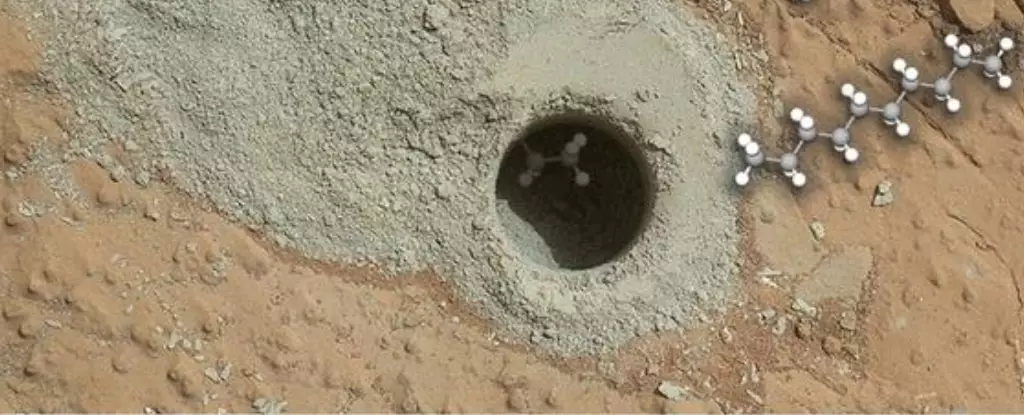The quest to uncover the mysteries of Mars has taken a spectacular turn with the recent findings from NASA’s Curiosity rover. As researchers have extracted evidence of long carbon chains from an ancient lakebed, the implications reach far beyond mere chemical data; they ignite our imagination and speculation about the red planet’s potential for life. This discovery not only reinforces the capability of our robotic emissaries to analyze extraterrestrial environments but also reshapes our understanding of organic chemistry in Martian geology. The findings, led by analytical chemist Caroline Freissinet from France’s CNRS, underscore an exciting juncture where science meets exploration.
A Glimpse into Martian Chemistry
The Curiosity rover, an icon of NASA’s Martian explorations, has been meticulously navigating the Gale crater, which boasts sedimentary layers that tell stories of ancient lakes. By drilling into a mudstone deposit named Cumberland, the rover has opened a window into the past, revealing a spectrum of organic compounds, including intriguing carbon chains with lengths up to twelve carbon atoms. This remarkable identification was accomplished through a meticulous process involving both gas chromatography and mass spectrometry — scientific methods that allow scientists to separate and identify compounds at an exceptionally detailed level. The findings suggest the presence of saturated hydrocarbon chains such as decane, undecane, and dodecane, hinting at sophisticated chemical processes that once may have taken place on Mars.
Life or Coincidence? The Debate Continues
One of the most thrilling aspects of this discovery is the tantalizing question it poses: Are these carbon chains indicative of past life on Mars, or are they merely the product of non-biological processes? While the researchers have acknowledged that abiotic methods can indeed produce these molecules, proposing a variety of natural mechanisms, they also note that the existence of such compounds could be markers of biological activity. The potential formation of such long carbon chains from simpler, lifeless precursors invites the continued exploration of life’s fingerprints on other worlds.
As our understanding deepens, the allure of the “biomarker” remains strong. It’s impossible to ignore the parallels between Martian chemistry and the organic compositions found on Earth, where carboxylic acids act as a testament to biological processes. As the researchers point out, though non-living processes can explain the formation of these acids, they are overwhelmingly associated with life. The landscape of science is often colored by such dualities, wherein each discovery nudges us closer to understanding our place in the cosmos, even while remaining precariously tethered between possibility and skepticism.
Implications for Future Exploration
Curiosity’s findings are paving the way for future Mars missions, which may benefit from this foundational knowledge. While we may not be close to discovering definitive proof of existing or past life forms on Mars, the data harvested from these carbon chains will provide vital insights into the kinds of experiments and analyses future rovers will perform. The next generation of Martian exploration promises to be equipped with enhanced instrumentation aimed at delving even deeper beneath the Martian surface, possibly revealing more signs of biological processes, if they exist.
As we reflect on the significance of this development, we must also recognize that each data point leads to further questions. The methodology for analyzing Martian samples continues to improve, suggesting that our understanding of the planet’s chemical landscape will only deepen with time. Every expedition adds to the fabric of Martian history, as the exploration of this alien world becomes more and more intricate and scientific.
Welcoming the Wonder of Possibility
One cannot help but marvel at the implications of such findings. The existence of long chains of carbon on Mars kindles a flame of wonder in our hearts, inviting speculation into the depths of cosmic possibility. As scientists labor over their analyses, the images of potential Martian life forms danced in the minds of many. The question of whether life ever flourished in the lakebeds of Mars tantalizes the human spirit, urging us to extend our reach into the universe. Each step brings us closer to unraveling the story of this enigmatic world, where the echoes of our own existence may yet find a distant counterpart. In the dance of carbon chains and celestial exploration, we find not just evidence of chemistry but an undeniable connection to the fabric of life itself across the cosmos.

